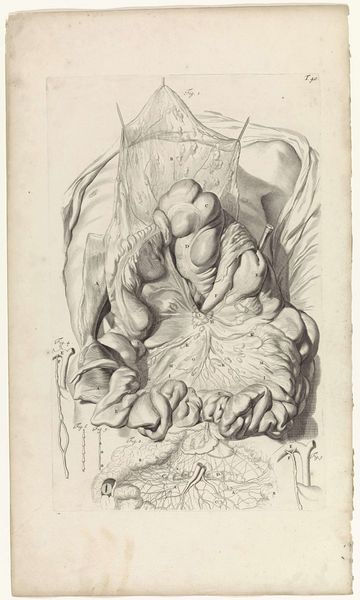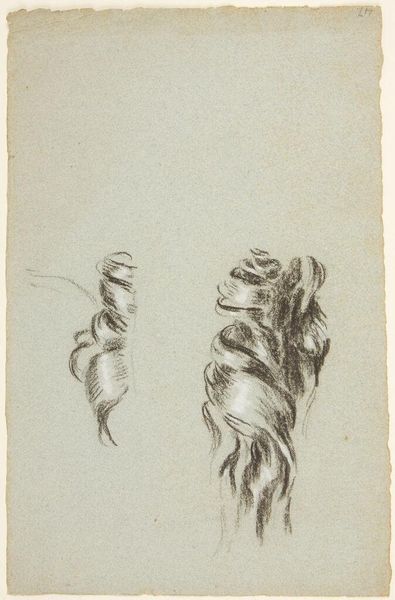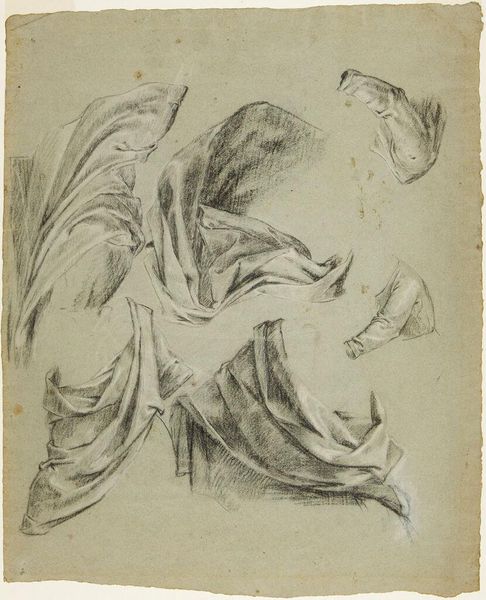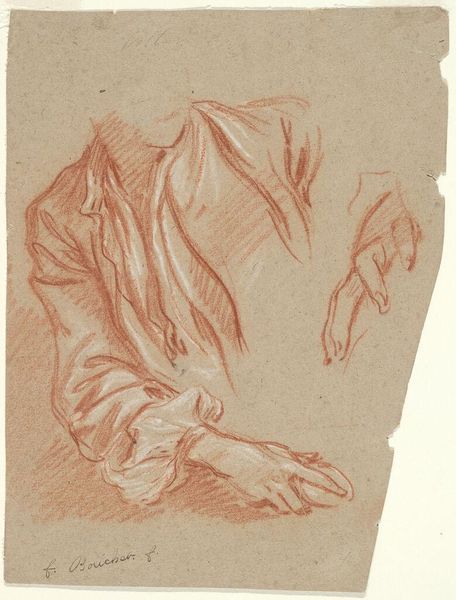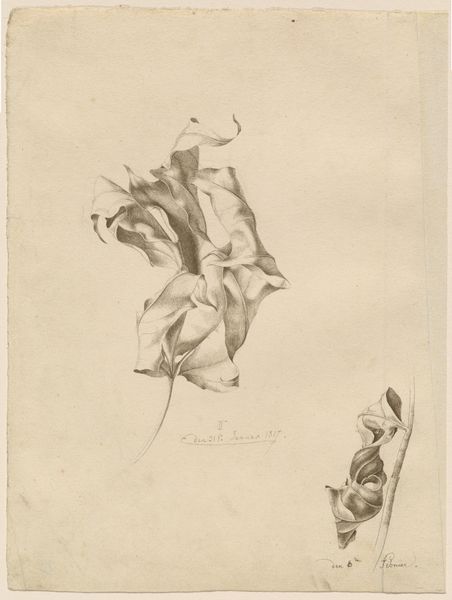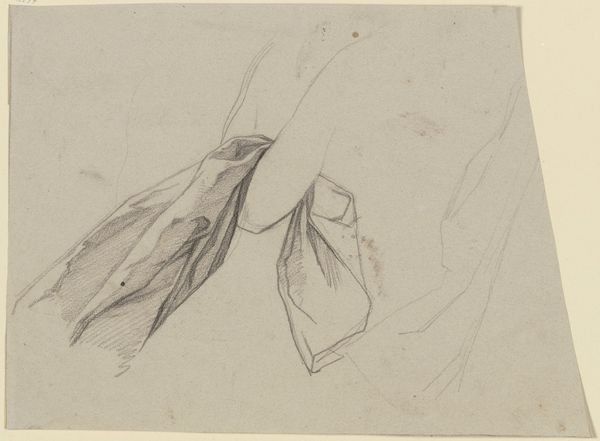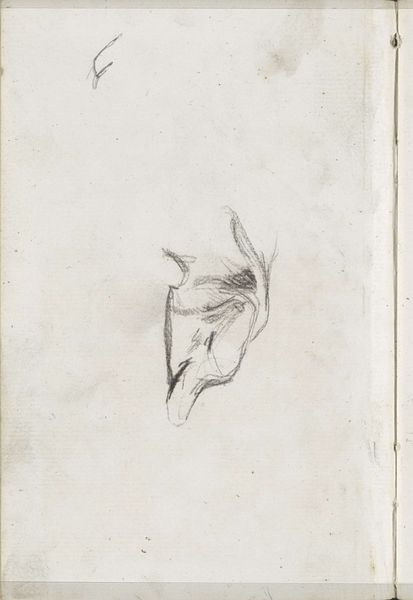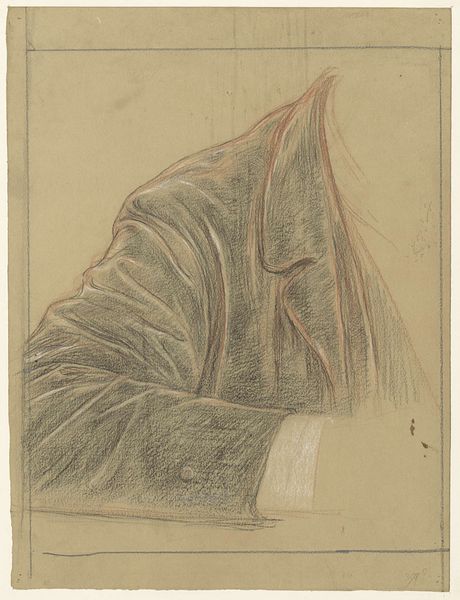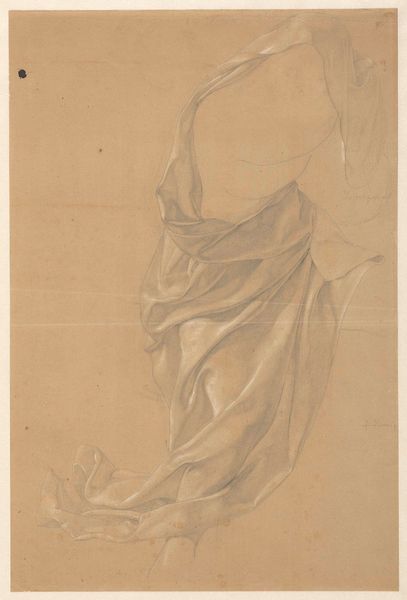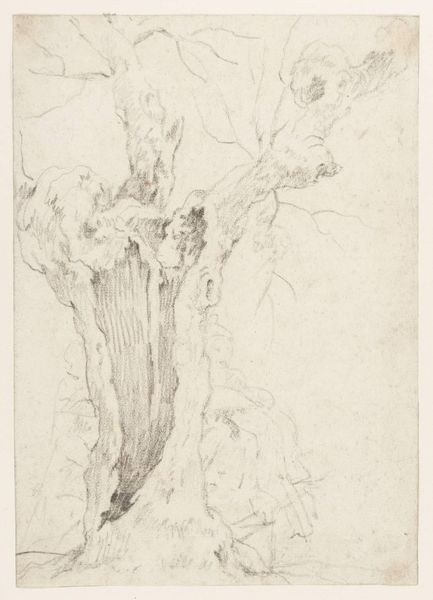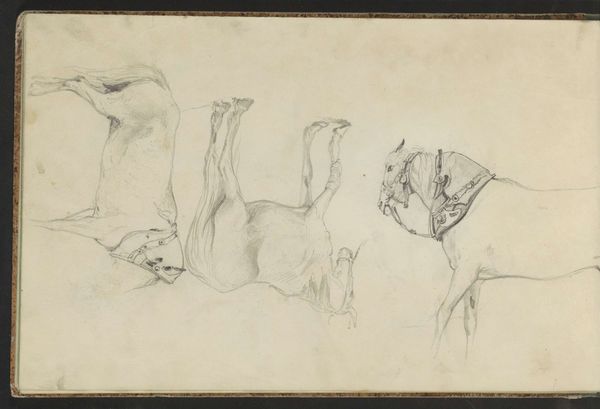
drawing, paper, ink, engraving
#
drawing
#
allegory
#
pencil sketch
#
mannerism
#
figuration
#
paper
#
ink
#
history-painting
#
engraving
Dimensions: height 217 mm, width 140 mm
Copyright: Rijks Museum: Open Domain
Curator: Well, the Rijksmuseum holds this intriguing ink drawing, an engraving made between 1585 and 1589 by Jacob Matham, titled "Luiheid (Acedia)." It's certainly… fragmented. Editor: That's an apt description. My initial reaction is one of incompleteness and almost disturbing imbalance. The hyper-detailed drapery grounds the piece, but the ghostlike figure above gives it an ethereal yet unsettling quality. It makes me wonder about its context. Curator: The title offers a significant clue. "Acedia" refers to a state of spiritual or mental sloth, a form of listlessness or despair that was considered a sin in medieval and Renaissance times. The contrast you observed likely embodies this very struggle—the conflict between earthly action and spiritual stagnation. Editor: So, the meticulously rendered drapery represents earthly engagement, weighed down perhaps, while the faint, almost spectral figure suggests a fading connection to the divine? There’s a push and pull there, structurally expressed through the varying levels of detail and the positioning on the paper. The line work is fascinating; in the robe section it's practically sculptural. Curator: Precisely. Matham employs allegorical visual language, prevalent in Mannerism, using figures and symbols to convey abstract concepts. We see the consequences of abandoning spiritual vigilance reflected in this stark contrast. The partial, ghost-like representation of a winged figure indicates lost energy, obscured clarity. It pulls on shared memory, calling to mind well known allegories with slight deviations. Editor: It's interesting how the emptiness of the upper portion almost acts as a vacuum, emphasizing the density and almost tactile nature of the drapery. There is something inherently disquieting in seeing an obviously skilled study not fully executed. It makes you contemplate the space itself. Curator: I agree, and in that emptiness lies a powerful commentary on the nature of acedia itself – the void that arises from neglecting one’s spiritual and moral duties. Jacob Matham seems to offer not only a warning, but a contemplation of that very absence. Editor: An absence made present through masterful deployment of artistic forms. Well, I definitely view this piece with fresh eyes. The use of form, the density versus the sketched implication is profound. Curator: It's truly astonishing how an incomplete piece can sometimes convey the most profound ideas.
Comments
No comments
Be the first to comment and join the conversation on the ultimate creative platform.
